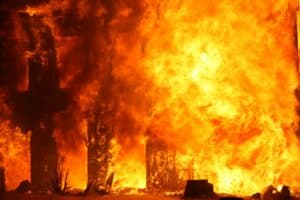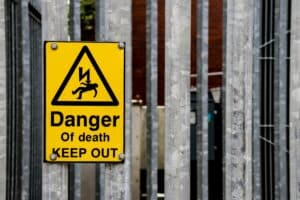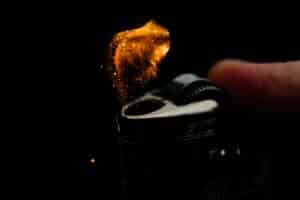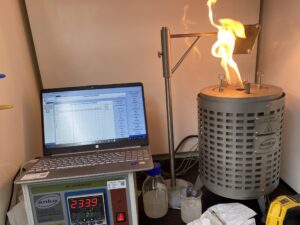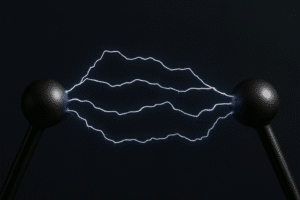Introduction
The pharmaceutical industry is known for its precision and innovation in delivering life-saving treatments. However, one critical safety concern often overlooked is the risk of combustible dust in pharmaceutical manufacturing. Fine pharmaceutical powders can be highly flammable, and if not properly managed, can lead to devastating fires and explosions.
In this article, we’ll explore the sources of combustible dust in the pharmaceutical industry, the associated risks, and essential prevention strategies to keep your facility safe and compliant.
What Is Combustible Dust?
Combustible dust refers to fine solid particles that can ignite and cause an explosion when suspended in air under certain conditions. In the pharmaceutical industry, dust can be generated from raw materials, intermediates, and finished products during processes like milling, blending, and tablet pressing. These dusts may contain organic compounds, metal powders, or mixtures that pose serious fire and explosion hazards.
Common Sources of Combustible Dust in Pharmaceutical Manufacturing
Many routine operations in pharmaceutical production can generate combustible dust. Identifying these sources is key to effective risk mitigation.
1. Milling and Grinding
-
Milling reduces raw materials to fine powders, creating significant airborne dust.
-
Grinding further reduces particle size and can generate highly combustible particles.
2. Blending and Mixing
-
Blending of APIs and excipients can release dust during agitation.
-
Mixing of lightweight powders can easily lead to dust dispersion in the air.
3. Tablet Pressing
-
Compression of powders during tablet production generates dust at loading and ejection stages.
-
De-dusting tablets after pressing can release additional particles into the environment.
4. Encapsulation
-
Filling and sealing capsules can generate dust, especially during material transfer and sealing operations.
5. Powder Handling and Transfer
-
Manual tasks like scooping, pouring, and weighing create airborne dust.
-
Pneumatic conveying systems may leak dust at connection points.
6. Drying and Granulation
-
Fluid bed drying and spray drying produce airborne particles as moisture is removed from materials.
7. Packaging
-
Dust is released during filling containers, sealing packages, and even during labeling operations.
8. Cleaning and Maintenance
-
Cleaning equipment and performing maintenance tasks such as filter changes disturb settled dust.
9. R&D Laboratories
-
Small-scale milling, blending, and experimental procedures also generate dust, particularly in early-stage product development.
Risks of Combustible Dust in the Pharmaceutical Industry
Understanding the hazards posed by combustible dust in pharmaceutical manufacturing is essential for effective prevention.
1. Dust Explosions
For an explosion to occur, five elements must be present: combustible dust (fuel), oxygen, an ignition source, dust dispersion, and confinement. These elements often exist together in pharmaceutical environments, particularly in enclosed equipment like dust collectors or processing vessels.
2. Fires
Dust can accumulate on surfaces near heat sources and ignite, resulting in rapidly spreading fires that can damage equipment and endanger workers.
3. Health Hazards
Inhalation of fine pharmaceutical dusts can cause respiratory problems, allergic reactions, or long-term health effects depending on the compound.
How to Mitigate Combustible Dust Hazards
A comprehensive safety strategy should include engineering controls, administrative measures, and the use of personal protective equipment (PPE).
Engineering Controls
Dust Collection Systems: Install systems that capture dust at its source and use HEPA filters for fine particles.
Ventilation: Local exhaust ventilation (LEV) systems help remove airborne dust.
Explosion Venting and Suppression: Use pressure relief systems and explosion suppression technologies.
Enclosures and Isolation: Contain dust-generating processes to prevent spread.
Administrative Controls
Housekeeping: Clean all surfaces regularly to prevent dust buildup.
Maintenance: Maintain dust control equipment and inspect regularly.
Training and Awareness: Train staff on dust hazards and emergency procedures.
Safety Protocols: Implement standard operating procedures for powder handling, ignition source control, and incident response.
Personal Protective Equipment (PPE)
Respiratory Protection: Provide dust masks or respirators based on exposure levels.
Protective Clothing: Require gloves, coveralls, and other PPE to prevent skin exposure and contamination spread.
Regulatory Compliance for Combustible Dust in Pharma
Compliance with key safety standards and regulations is critical in controlling combustible dust hazards:
-
OSHA: Enforces the General Duty Clause and other standards for hazardous materials handling.
-
NFPA 654: Offers detailed guidance on preventing dust fires and explosions.
-
ATEX Directives (Europe): Govern equipment and protective systems in explosive atmospheres.
Real-World Incidents: Case Studies and Lessons Learned
Case Study 1: Dust Collector Explosion (2003)
A dust explosion at a pharmaceutical facility injured workers and damaged the plant. Investigation revealed excessive dust accumulation in a dust collector and ignition by nearby equipment.
Takeaways:
-
Maintain dust collectors regularly.
-
Prevent dust accumulation.
-
Control ignition sources near dust-handling systems.
Case Study 2: Tablet Press Fire (2011)
Frictional heat during tablet compression ignited dust that had built up on the press, resulting in a fire that spread throughout the area.
Takeaways:
-
Keep equipment clean and dust-free.
-
Inspect machinery for heat or spark sources.
-
Use enclosures and LEV systems to minimize dust escape.
Conclusion
The dangers of combustible dust in the pharmaceutical industry are real but preventable. Through a mix of engineering controls, proper housekeeping, staff training, and regulatory compliance, facilities can protect their workers and equipment from fire and explosion hazards.
By fostering a strong safety culture and maintaining vigilance in operations, the pharmaceutical sector can continue to innovate while maintaining a safe, dust-controlled environment.
Need help assessing or mitigating combustible dust hazards in your pharmaceutical facility?
Prime Process Safety Center specializes in dust hazard analysis, engineering design, and compliance support. Contact us today to learn how we can help safeguard your operation.









